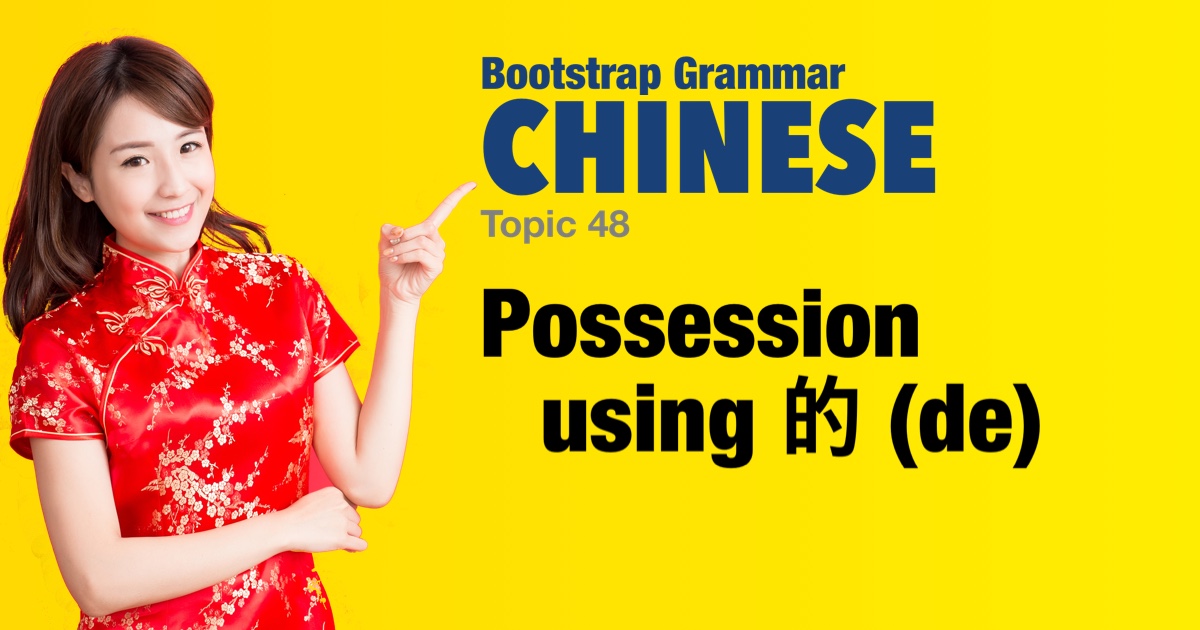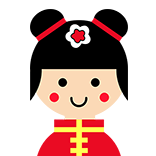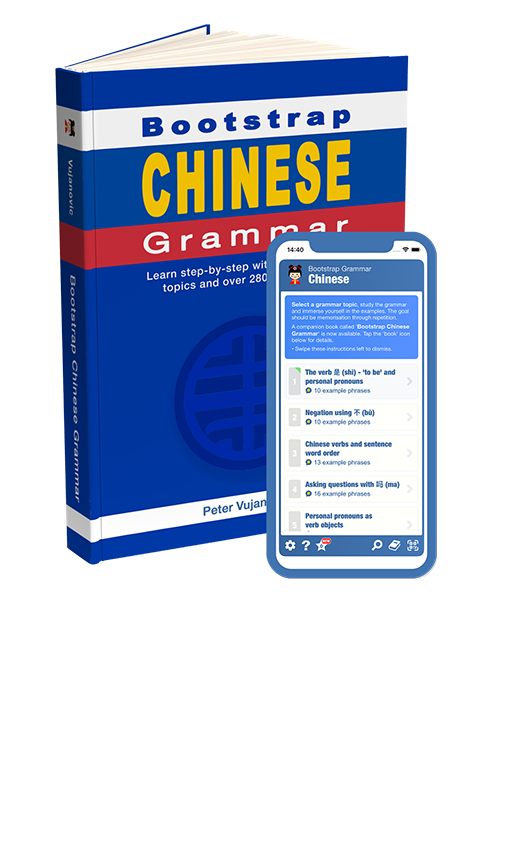Chinese grammar - Possession using 的 (de) |
|||
|
|||
In Chinese, another use of the particle 的 (de) is to indicate possession or ownership. The pattern is: [Possessor] + 的 + [Possessed item] |
| Examples: | |
|
我的书
wǒ de shū my book |
|
|
他的车
tā de chē his car |
|
|
老师的教室
lǎoshī de jiàoshì the teacher's classroom |
|
|
这是我的书。
zhè shì wǒ de shū. This is my book. |
|
|
那是你的车。
nà shì nǐ de chē. That is your car. |
|
|
这是他的房子。
zhè shì tā de fángzi. This is his house. |
|
|
狗的尾巴很长。
gǒu de wěiba hěn cháng. The dog's tail is long. |
|
|
他的车在哪里?
tā de chē zài nálǐ? Where is his car? |
|
|
你要我的笔吗?
nǐ yào wǒ de bǐ ma? Do you want my pen? |
|
|
我的朋友在日本工作。
wǒ de péngyǒu zài rìběn gōngzuò. My friend works in Japan. |
|
|
我喜欢你的朋友。
wǒ xǐhuān nǐ de péngyǒu. I like your friend. |
|
|
她的头发很漂亮。
tā de tóufa hěn piàoliang. Her hair is beautiful. |
|
|
你们的老师很好。
nǐmen de lǎoshī hěn hǎo. Your teacher is very good. |
|
|
他们的朋友在这里。
tāmen de péngyǒu zài zhèlǐ. Their friend is here. |
|
|
她们的花很漂亮。
tāmen de huā hěn piàoliang. Their (females) flowers are beautiful.
|
|
|
老板的办公室在三楼。
lǎobǎn de bàngōngshì zài sān lóu. The boss's office is on the third floor.
|
|
|
孩子的玩具在桌子上。
háizi de wánjù zài zhuōzi shàng. The child's toy is on the table. |
|
|
医生的诊所很近。
yīshēng de zhěnsuǒ hěn jìn. The doctor's clinic is very close.
|
|
|
老师的书在书架上。
lǎoshī de shū zài shūjià shàng. The teacher's book is on the bookshelf. |
|
|
朋友的电话在桌子上。
péngyǒu de diànhuà zài zhuōzi shàng. The friend's phone is on the table.
|
|
 |
|



